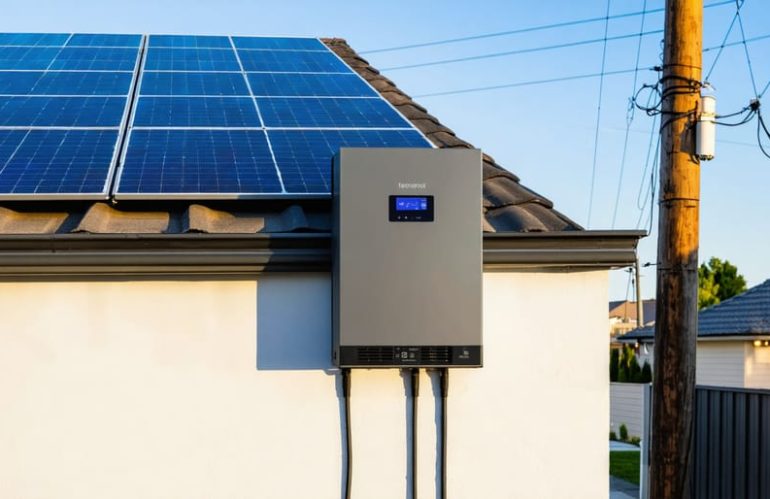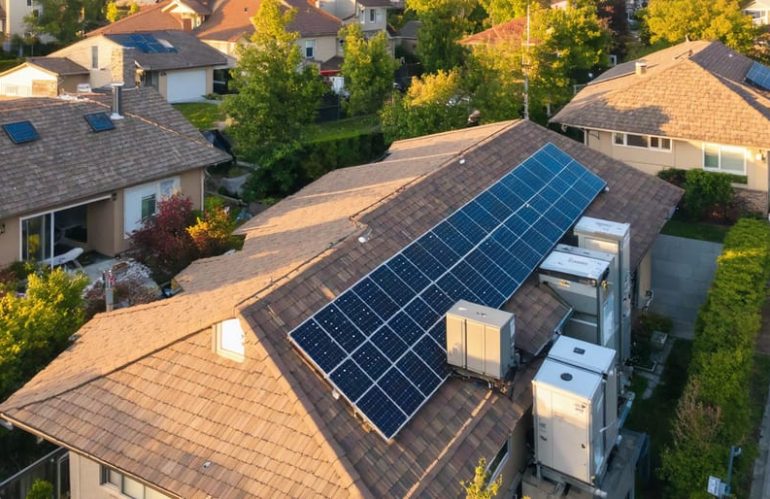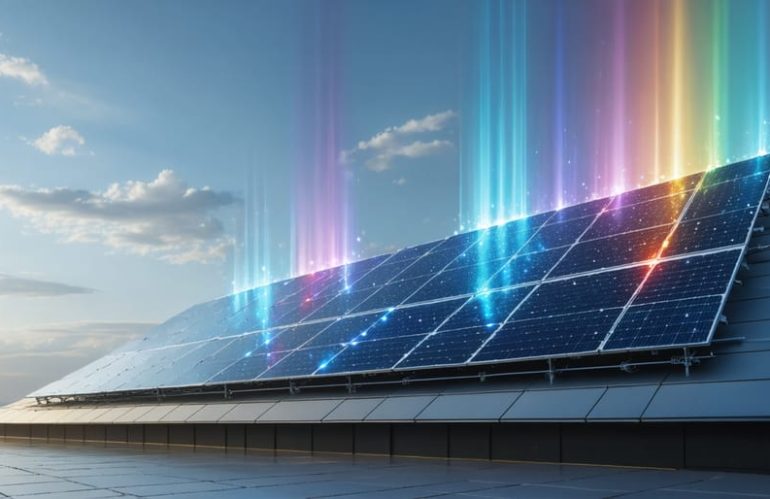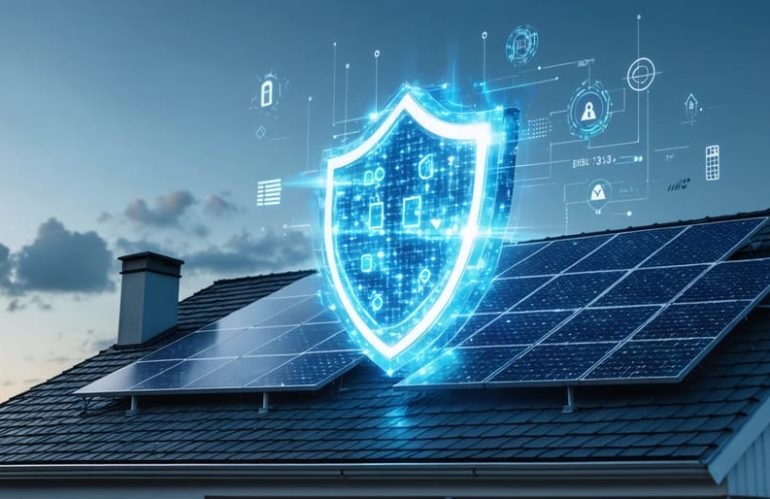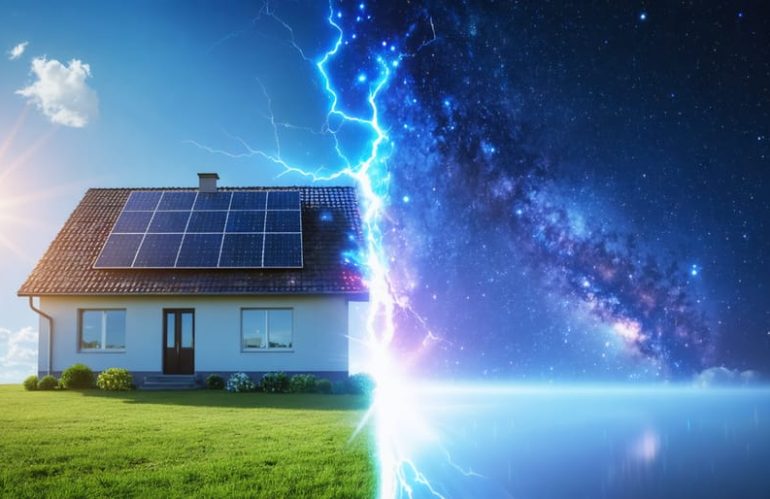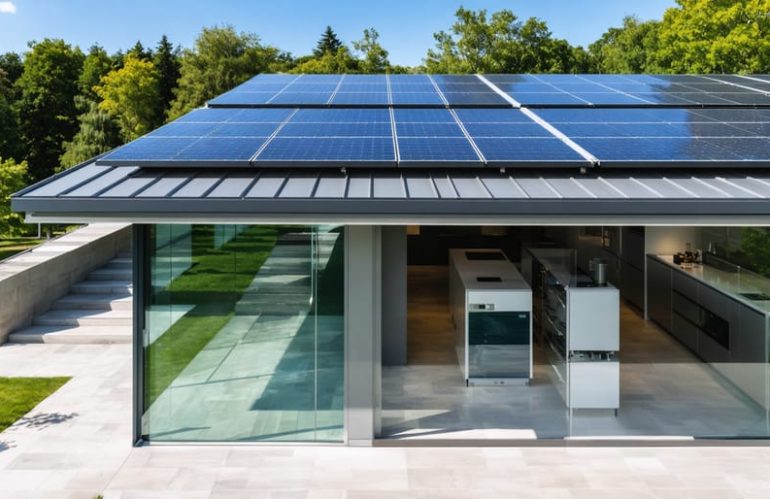Your solar panels generate electricity as direct current (DC), but your home runs on alternating current (AC)—and the device bridging that gap, your inverter, has become the unsung hero of modern energy resilience. Inverter-based resources (IBRs) are simply solar systems, battery storage, and other technologies that convert power through inverters rather than spinning turbines like traditional power plants.
This technical shift matters to your wallet and your lights staying on. As utilities modernize the grid to accommodate more renewable energy, they’re updating requirements for how solar systems connect and communicate. …
Category: Resilience and Adaptation
Strategies and solutions for ensuring system resilience across different conditions and scenarios
Community Microgrids: How Your Neighborhood Can Power Through Any Crisis
Community microgrids represent a groundbreaking shift in how neighborhoods power themselves, combining local energy generation, smart distribution, and storage to create resilient, sustainable communities. When winter storms knocked out power across Texas in 2021, neighborhoods with microgrids kept their lights on and homes heated, demonstrating why these systems are rapidly gaining attention nationwide.
Unlike traditional power grids, community microgrids operate like local power islands, capable of disconnecting from the main utility grid during outages while maintaining electricity flow to connected homes and essential services. …
These Next-Gen Solar Panel Materials Make Your Investment Last Longer
Solar panels represent a remarkable fusion of Earth’s raw materials transformed into clean energy technology. At their core, these innovative devices rely primarily on high-grade silicon, the second most abundant element in the Earth’s crust, alongside precise amounts of silver, copper, and aluminum. The careful selection and quality of these materials directly impact a solar panel’s efficiency, lifespan, and ultimately, your return on investment.
As global demand for solar technology continues to surge, manufacturers are pioneering new material combinations and engineering techniques to enhance performance while …
Quantum Solar Panels: The Future of Durable Home Energy Is Here
Quantum solar panels represent a groundbreaking leap forward in renewable energy technology, promising to revolutionize how we harness the sun’s power. By leveraging quantum mechanics at the nanoscale level, these next-generation panels can capture and convert solar energy with unprecedented efficiency, potentially generating up to 50% more electricity than traditional photovoltaic cells. While conventional solar panels typically convert 15-20% of sunlight into usable energy, quantum-enhanced systems push these boundaries by capturing previously unused light wavelengths and transforming them into electrical power.
For …
How Solar System Cybersecurity Keeps Your Home Energy Safe
In today’s interconnected world, cybersecurity resilience represents more than just defending against attacks—it’s about maintaining continuous operations despite digital threats. This critical capability enables organizations and homeowners alike to protect their smart energy systems while ensuring uninterrupted power delivery. As solar installations become increasingly connected to smart grids and internet-enabled monitoring systems, understanding cybersecurity resilience has never been more essential.
Cybersecurity resilience encompasses an organization’s ability to anticipate, withstand, recover from, and …
How Solar Panel Security Keeps Your Home Energy System Safe
As our energy infrastructure becomes increasingly digital, cybersecurity has emerged as a critical priority for homeowners with solar installations. Modern high-performance solar systems are connected to smart grids and home networks, creating new opportunities for energy independence—but also new responsibilities for security awareness.
Recent data shows that cyber attacks targeting residential renewable energy systems increased by 300% in the past year alone. Yet most homeowners remain …
Battery Storage Makes Your Solar Power Work Harder (Even When the Sun Doesn’t)
Battery storage systems are revolutionizing how homeowners harness and utilize renewable energy, offering a practical solution to one of sustainable power’s biggest challenges: intermittency. By storing excess solar or wind energy for later use, these systems provide energy independence, reduced utility bills, and reliable backup power during outages.
Today’s battery technology has evolved far beyond its humble beginnings, with modern lithium-ion systems offering efficient, compact solutions that integrate seamlessly with existing home solar installations. For homeowners, this means the ability to power their homes …
How Gravity Storage Could Revolutionize Your Home’s Energy Future
Imagine a world where storing renewable energy is as simple as lifting and lowering weights. That’s exactly what gravity-based energy storage systems are making possible today. This breakthrough technology transforms excess solar and wind power into potential energy by elevating heavy masses, then releases that energy by lowering them when needed – much like a grandfather clock using gravity to keep time, but on a much grander scale.
For homeowners already investing in solar panels, gravity storage could be the missing piece in achieving true energy independence. Unlike traditional batteries that degrade over time and …
DOE Solar Grants Just Made Home Grid Resilience Much More Affordable
The Department of Energy’s new Grid Resilience Grant Program unlocks unprecedented funding opportunities for homeowners pursuing clean energy solutions. With $10.5 billion allocated through the Infrastructure Investment and Jobs Act, these grants represent a transformative step toward building true power resilience across American communities. The program specifically targets infrastructure modernization, focusing on smart grid technology, renewable energy integration, and enhanced…
Solar Power Makes Your Home’s Electricity Hurricane-Proof (Here’s How)
Our aging electrical grid faces unprecedented challenges from extreme weather, cyber threats, and growing energy demands. Yet within these challenges lies an opportunity to build a more resilient, sustainable power system that protects both our communities and our planet.
Grid resilience isn’t just about keeping the lights on—it’s about ensuring our critical infrastructure can withstand and rapidly recover from disruptions. As climate change intensifies storms and heat waves strain our power systems, homeowners and businesses are increasingly vulnerable to costly outages. The average American experiences over eight …

